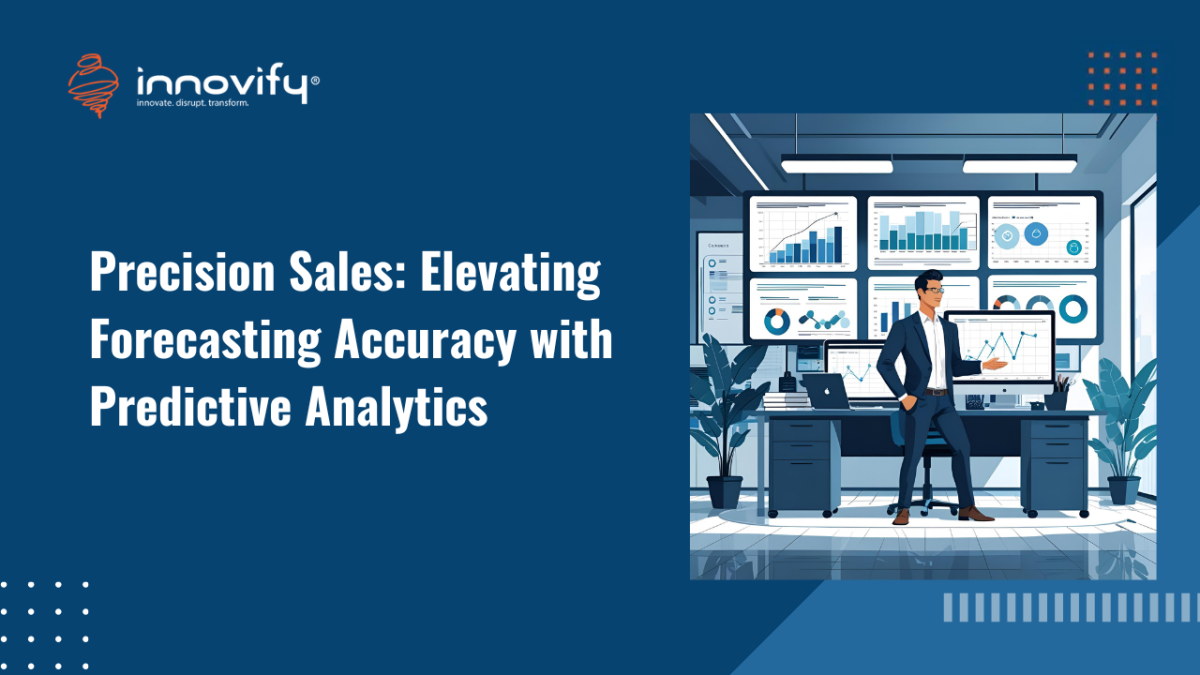AI/ML
Precision Sales: Elevating Forecasting Accuracy with Predictive Analytics
Implementing predictive analytics for sales forecasting accuracy
Sales forecasting has long been a cornerstone of business planning, guiding decisions on everything from inventory levels and staffing to marketing spend and strategic investments. Traditionally, these forecasts have relied on historical sales data, sales team intuition, and basic statistical models. While these methods offer a baseline, they often fall short in today’s dynamic markets, leading to overstocking, missed opportunities, or misallocated resources. The modern imperative is to move beyond mere estimation to achieving precision in sales predictions, and this is where implementing predictive analytics for sales forecasting accuracy becomes indispensable.
The Limitations of Traditional Sales Forecasting
Traditional sales forecasting, often a blend of art and science, struggles with several inherent limitations. It typically looks backward, using past performance to project future trends. This approach can miss the nuances of rapidly changing market conditions, sudden shifts in consumer behavior, new competitive pressures, or unexpected economic fluctuations. Sales team intuition, while valuable, can be biased by recent wins or losses, leading to overly optimistic or pessimistic outlooks. Simple statistical models, such as moving averages, are often too simplistic to capture complex, non-linear relationships within the data. The result is forecasts that can be off by significant margins, impacting profitability and agility.
The Predictive Analytics Advantage
Predictive analytics transforms sales forecasting by leveraging advanced machine learning algorithms to process vast and varied datasets. Instead of just looking at past sales, these models incorporate a multitude of influencing factors:
- Historical Sales Data: This remains crucial, but predictive models can identify subtle patterns, seasonality, and long-term trends more effectively.
- External Economic Indicators: GDP growth, inflation rates, consumer confidence, and unemployment figures can significantly impact purchasing power and demand.
- Market Trends: Data from social media, news, industry reports, and competitor activities can provide leading indicators of market shifts.
- Promotional Activities: The impact of past marketing campaigns, discounts, and promotions on sales volume.
- Website Analytics: User behavior on e-commerce sites, including clicks, views, cart abandonments, and search queries.
- CRM Data: Customer demographics, interaction history, lead scoring, and pipeline stages.
- Weather Patterns: For certain industries (e.g., retail, agriculture), weather can be a powerful predictor of demand.
By feeding this rich, multi-faceted data into machine learning models (such as regression, time-series analysis, or ensemble methods), predictive analytics can uncover complex relationships and make highly accurate, nuanced predictions.
Benefits Across the Business
The ripple effect of accurate sales forecasts enabled by predictive analytics is profound, delivering tangible benefits across the entire organization:
- Optimized Inventory Management: Precisely forecasted demand allows businesses to optimize inventory levels, minimizing holding costs for excess stock and preventing stockouts that lead to lost sales and customer dissatisfaction.
- Improved Resource Allocation: Sales leaders can more effectively allocate sales force resources, target high-potential leads, and adjust staffing levels in call centers or retail stores based on anticipated demand.
- Smarter Marketing Campaigns: Forecasts can inform marketing strategies, allowing for timely promotions, personalized offers, and targeted advertising campaigns that align with predicted customer behavior.
- Enhanced Strategic Planning: Accurate forecasts provide a solid foundation for long-term strategic planning, including budget allocation, capacity planning, product development roadmaps, and expansion strategies.
- Reduced Risk and Greater Agility: By identifying potential dips or surges in demand well in advance, businesses can proactively mitigate risks and adapt quickly to changing market conditions, giving them a significant competitive edge.
Implementing predictive analytics for sales forecasting accuracy is not just an incremental improvement; it’s a strategic shift that moves businesses from reactive guesswork to proactive, data-driven foresight. It empowers leaders to make confident
decisions that optimize operations, boost profitability, and secure a stronger position in the market. Ready to achieve unparalleled accuracy in your sales forecasts? Book a call with Innovify today.




